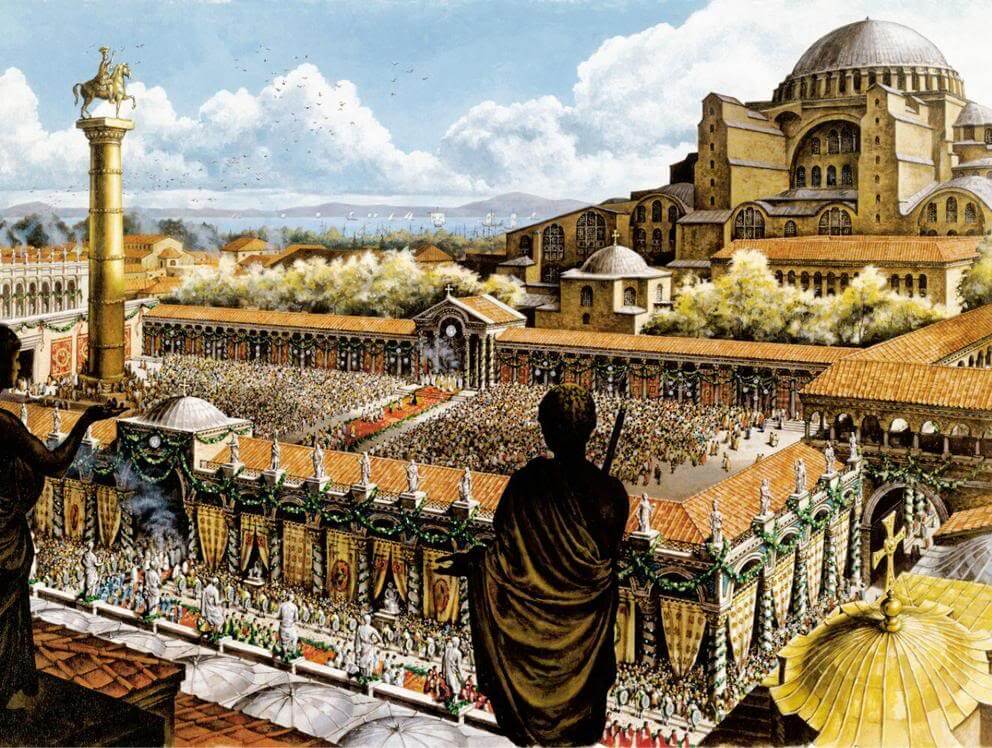The Constantinople Era

In the Seventh Century B.C.E., the Megarians, taking after the exhortation of the Delphic Oracle, established a city by the name of Byzantium in Sarayburnu.
The Megarians were the primarily recorded individuals to settle in the zone of present-day Istanbul. In the 680s B.C.E., they moved from Greece, went through the Marmara Sea and established the city of Chalcedon in the place of the momentum neighborhood of Kadıköy, on the Asian side. The principal tenants of Chalcedon were agriculturists, and bear the questionable respect of being known as “The Nation of the Blind”. In the 660s B.C.E., another gathering of Megarians established a city in the present-day area of Sarayburnu. As per legend, these Megarians went to the prophet at the Temple of Delphi before setting out via ocean to set up a city. The prophet prompted them to settle “straightforwardly inverse the Nation of the Blind”. When they achieved the present-day site of Sarayburnu, the Megarian settlers were inspired by its tallness and by the way that it was normally secured on three sides by the ocean. After they saw Chalcedon, straightforwardly over the Bosphorus from Sarayburnu, they contemplated internally, “Any individual who could set up a city in perspective of such a flawless site should, in reality, be visually impaired!”
The Byzantine time frame
The Megarians chose that the prophet’s unclear exhortation more likely than not alluded to Istanbul – Sarayburnu, and built up the principal settlement in their city here. They gave the name “Byzantium” to the city, after one of their chiefs, Byzas. along these lines, the foundations of Istanbul were set amid the Seventh Century B.C.E. – known as the start of the Byzantine Period – by Megarian settlers from Greece. In 278 B.C.E., Byzantium was attacked by Teutonic tribes who had originated from the west. In the wake of triumphing in the Macedonian Wars in 146 B.C.E., the Romans took control of the Balkans and Asia Minor; obviously, Byzantium, as well, turned out to be a piece of the Roman Empire. In 330 C.E., the Roman Emperor Constantine I broadcasted Byzantium the new capital of the Empire and started to remodel the city. The city was rechristened as “Constantinople”, and, from that day forward, got to be distinctly a standout amongst the most critical areas in the Christian World. The Roman Empire was authoritatively part into two sections, the East and the West in 395 C.E. In 476 C.E. the Ostrogoths expelled the Western Roman Emperor Romulus Augustus from the royal position and consequently gave back the whole Empire to Zeno, the Eastern Roman Emperor. This exchange of force denoted the defeat of the Western Roman Empire and Constantinople’s foundation as the single magnificent capital. From that point, Constantinople turned into a particularly eastern Orthodox city.
The Latin Occupation
The Crusaders initially achieved Istanbul is 1096 C.E. In the wake of learning of the contention over the Byzantine position of royalty, the Crusaders chose to accept the open door to enter the city. With the assistance of the Venetians, they could enter the Golden Horn, and took the city on 13 April 1204 C.E. Promptly taking after their landing, they started to abuse and ruin the city; Constantinople’s nobles and affluent classes had fled to the city of Nicaea toward the east.
Come back to Byzantine
The Second Byzantine Period started in 1261 with the retaking of Istanbul from the Latins by the Palaiologos Dynasty. Be that as it may, the city was never to come back to its previous significance and grandness. During the Time Byzantine Period, the city started to be encompassed gradually by the Ottomans, and, in the long run, the certainty of its fall turned out to be clear. From 1393 ahead, the city was compelled to pay a tribute to the Ottomans. Despite the fact that it was encompassed in 1393 by Sultan Yıldırım Bayezid and in 1422 by Sultan Murat II, neither of them could take the city totally.




No Comments